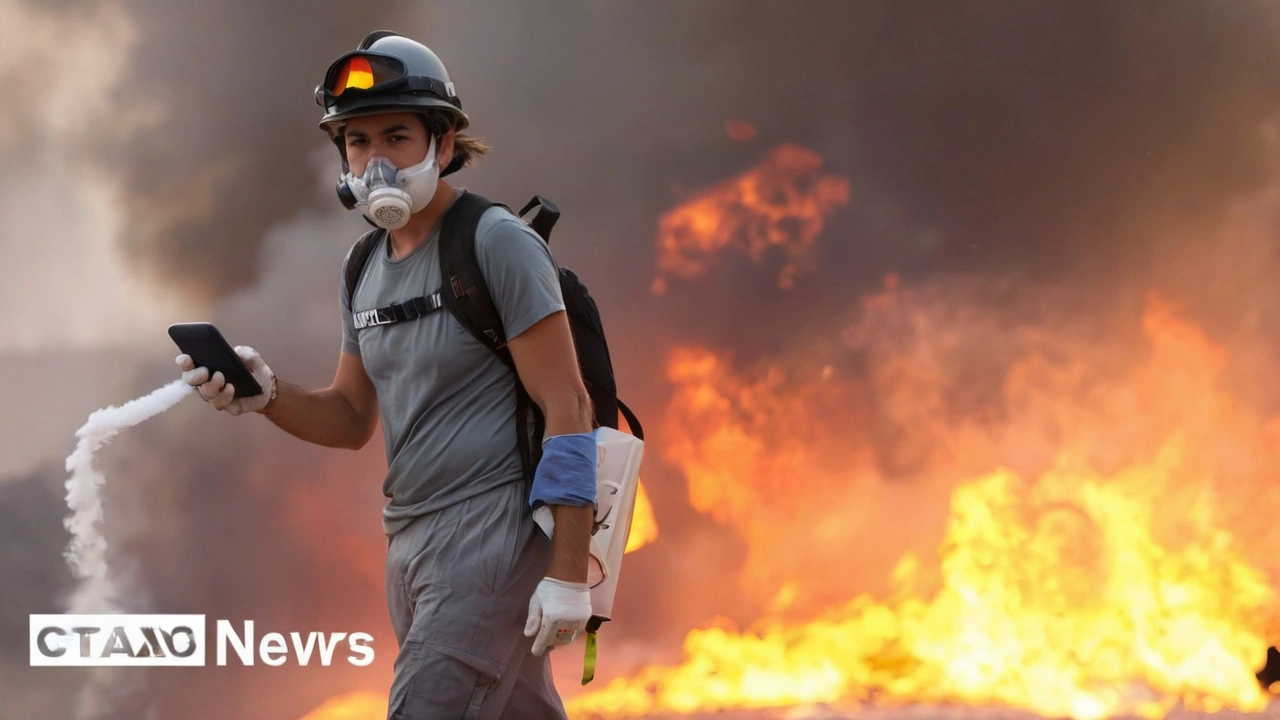Introduction
In a classroom setting that was supposed to be a routine reading exercise, first-grade students from Hesperia, California, found themselves embroiled in a dramatic event that not only disrupted their day but also highlighted the profound effects of teaching critical thinking skills at such a young age. Under the guidance of their teacher, Renee McAnulty, the children reacted fiercely to an article in their school newspaper about a character named Rocky, leading to an outpouring of emotions, debates, and a collective action that wasn't just unexpected but enlightening in more ways than one.

The Event Unfolds
It all started on what seemed like an ordinary day. The students were asked to engage in a reading exercise using the latest edition of the school newspaper. However, as they delved into the text, it quickly became apparent that something was amiss. The article in question discussed a character named Rocky, and according to the students, it was riddled with inaccuracies and falsehoods. As they read on, the initial confusion soon turned into a strong emotional response. The classroom atmosphere shifted dramatically as the children began to express their dismay, and some even became tearful.
Teacher's Perspective
Mrs. Renee McAnulty, the teacher overseeing this exercise, was taken aback by the level of intensity that her students displayed. She shared her observations, noting that the children were not just offended but also deeply concerned about the integrity of the information presented to them. The first graders’ ability to scrutinize the content critically and identify what they perceived as lies was both surprising and impressive. However, the emotional upheaval it caused was something she hadn't anticipated. The children’s outrage was palpable, and it set the stage for a series of remarkable events.
Student Reactions
The disruption escalated as more students voiced their opinions. Many were inconsolable, and the situation became one where these young minds were not just upset but actively seeking solace from each other. They huddled together, cried, and discussed what they had just read. What stood out during this period was their ability to articulate their thoughts and feelings about the article. They passionately debated the inaccuracies they believed were present and questioned why such false information would be printed in their school newspaper. The character, Rocky, whom many students had grown to love, was depicted in a manner they felt was unjust.

A Collective Decision
Amidst the tears and debates, a surprising turn of events took place. Motivated by their sense of injustice and a budding understanding of persuasive writing, these first graders decided to take action. They collectively agreed that the best course forward was to write letters to the editor of the school newspaper. This decision wasn’t prompted by their teacher but was an organic outcome of their collective sentiments and the critical thinking skills that they had been encouraged to develop. The letters they wrote were heartfelt appeals for truth and fairness, a testament to the power of young voices when given the tools to express themselves effectively.
The Educational Implications
This incident has opened up various discussions about the significance of teaching critical thinking and persuasive writing at an early age. While the primary aim is to enable students to analyze information and craft convincing arguments, it also demonstrates the emotional and social dimensions of such skills. When young students are given the ability to think critically, they don't just engage with texts on a superficial level—they internalize and react to them profoundly, as evidenced by the events in Mrs. McAnulty’s classroom. It’s a clear indication that education isn’t merely about imparting knowledge but also about shaping the ways in which young minds interact with the world.
Broader Conversations
The unusual scenario of first graders reacting so vehemently to a school newspaper article has sparked wider conversations among educators and parents. It raises questions about the nature of content provided to young students and the responsibilities of school publications in ensuring accuracy and age-appropriateness. Moreover, it underscores the necessity of creating classroom environments where students feel empowered to voice their opinions, even if those opinions lead to unexpected outcomes.

Conclusion
The incident at Hesperia serves as a compelling case study on the ripple effects of teaching critical thinking and expression skills to young children. What began as a simple reading exercise transformed into a powerful lesson in media literacy, emotional intelligence, and advocacy. The students' passionate response and subsequent actions offer a glimpse into the potential of nurturing young minds to be not just passive recipients of information, but active and critical participants in their learning journeys. As educators and parents ponder the implications of this episode, one thing is clear: young students are more perceptive and capable than we often give them credit for, and their voices, when heard, can lead to meaningful changes and insightful discussions.



Norm Rockwell
August 6, 2024 AT 23:59Lawrence Abiamuwe
August 8, 2024 AT 06:47Dan Ripma
August 10, 2024 AT 06:44amrin shaikh
August 12, 2024 AT 01:30jai utkarsh
August 12, 2024 AT 03:26Chandan Gond
August 13, 2024 AT 03:38Hailey Parker
August 14, 2024 AT 17:12John Bartow
August 14, 2024 AT 21:39Mark L
August 15, 2024 AT 11:27